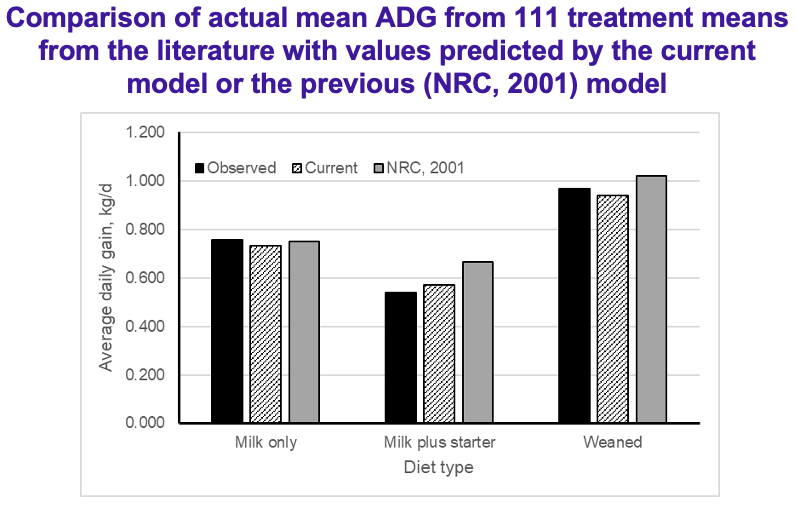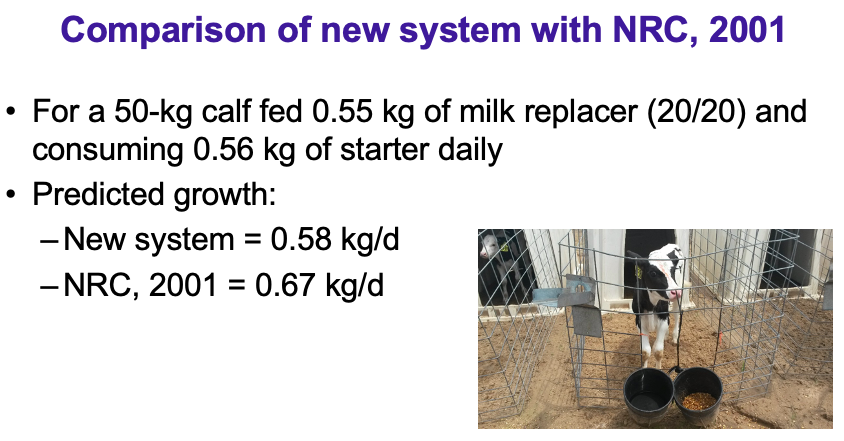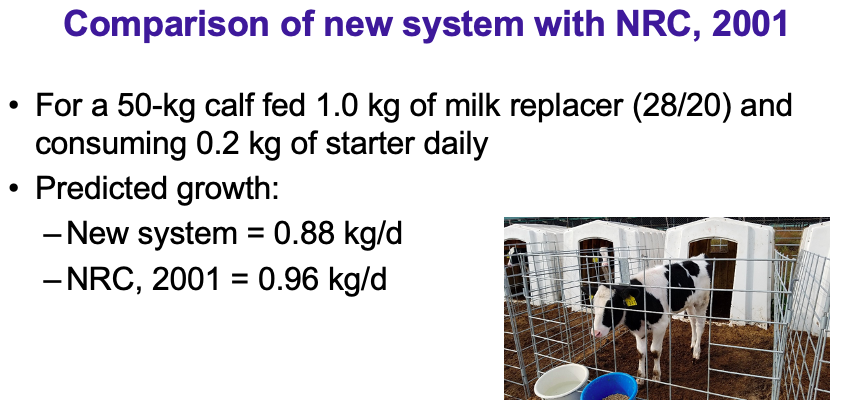Changes for Calf Diets
Changes for Calf Diets
The two additional decades of research used in NASEM 2021 (aka NRC 2021) heralded wider and deeper understanding of dairy cattle nutrition. At last year’s ADSA meeting, NASEM committee member Dr. James Drackley of the University of Illinois highlighted the major changes in calf requirements.
“For young dairy calves,” Drackley says, “there’s an extensive revision of the nutrient requirements, with some of the biggest changes centered on dietary energy. The new model enables more accurate prediction of growth in calves fed milk and milk replacer across a wider range of management systems.”
 Drackley notes that the supporting meta analyses on energy for calves included more than 400 means from randomly selected studies published in refereed journals, including international sources of studies of both temperate and hot climate dairy calf rearing.
Drackley notes that the supporting meta analyses on energy for calves included more than 400 means from randomly selected studies published in refereed journals, including international sources of studies of both temperate and hot climate dairy calf rearing.
It turns out there were two main problems with the NRC 2001 energy equations:
- Data for the metabolizable energy (ME) equation came from studies with heavier veal calves fed milk only
- Estimated efficiency of converting ME to RE (retained energy) was overly high for lighter weight growing calves that were primarily depositing protein (measured RE = ME intake minus heat production)
“To accurately determine RE,” Drackley says, “we must know composition of body weight (BW) gain.”
Fortunately, there have been several calf body composition studies since NRC 2001, which researchers have used to derive maintenance energy, relationships between RE and empty BW gain (EBW) and metabolic body size, and efficiencies of ME use.
For the NASEM 2021 recommendations, EBW was used for all calculations, including starter intake estimation equations.
“Modelling ‘energy-allowable growth’,” Drackley says, “allows more accurate prediction of starter intake and better evaluation of calf feeding strategies, taking into account calf maintenance requirements across a range of environmental temperatures.”
NASEM 2021 includes separate requirement tables for calves of different BW and growth rates for:
- Calves fed milk or milk replacer only
- Calves fed both milk and starter
- Weaned calves
- Veal calves


There was extensive validation of the model with experimental data, Drackley notes, including studies before and after NRC 2001 — enough data to estimate ME intake, BW, and BW gains across a range of milk or milk replacer intakes, starter intakes, forage or not, and ADG (average daily gain).
See the online edition of Nutrient Requirements of Dairy Cattle (Eighth Revised Edition, 2021).
Questions?
Email FeedInsight 4U

